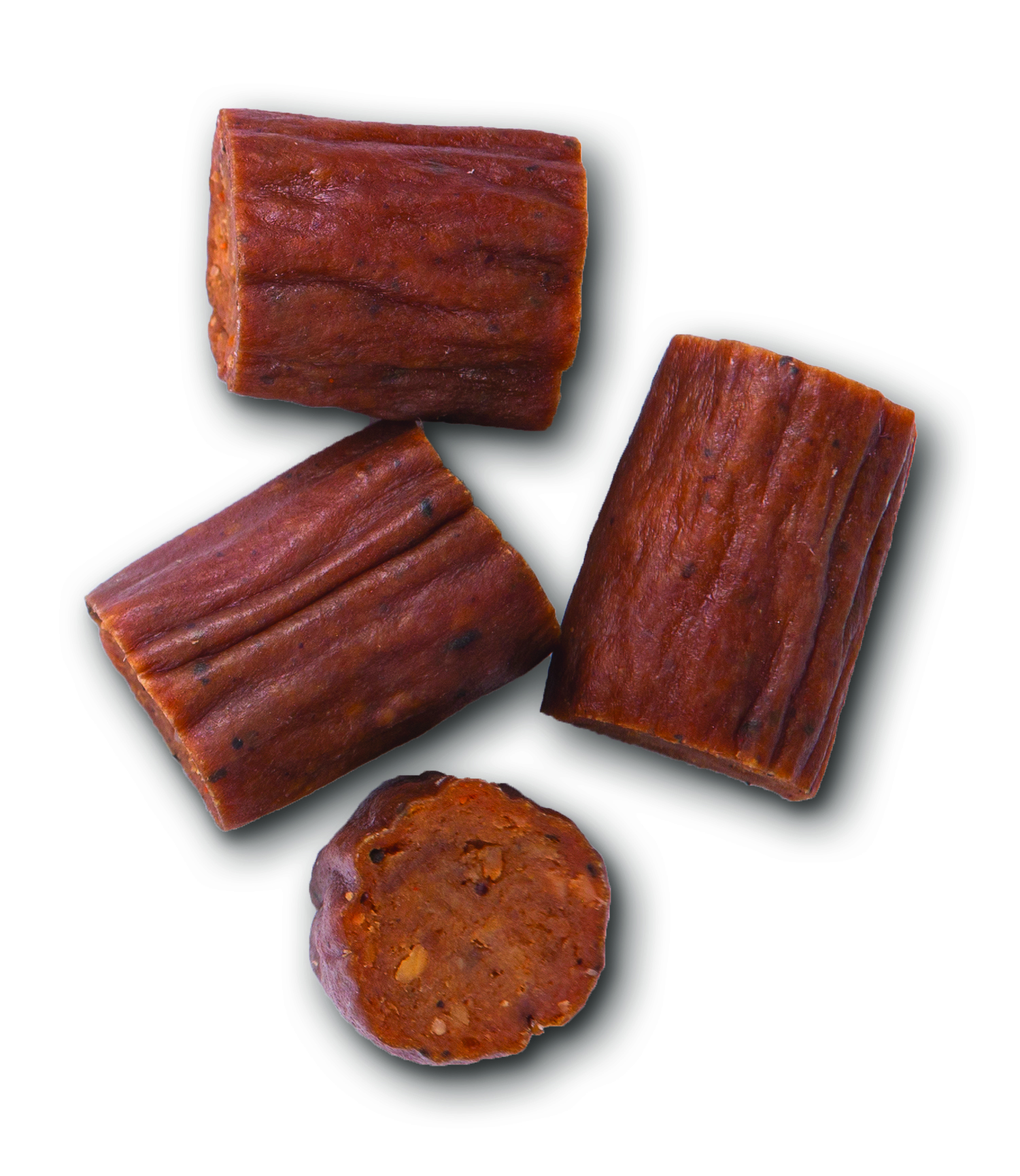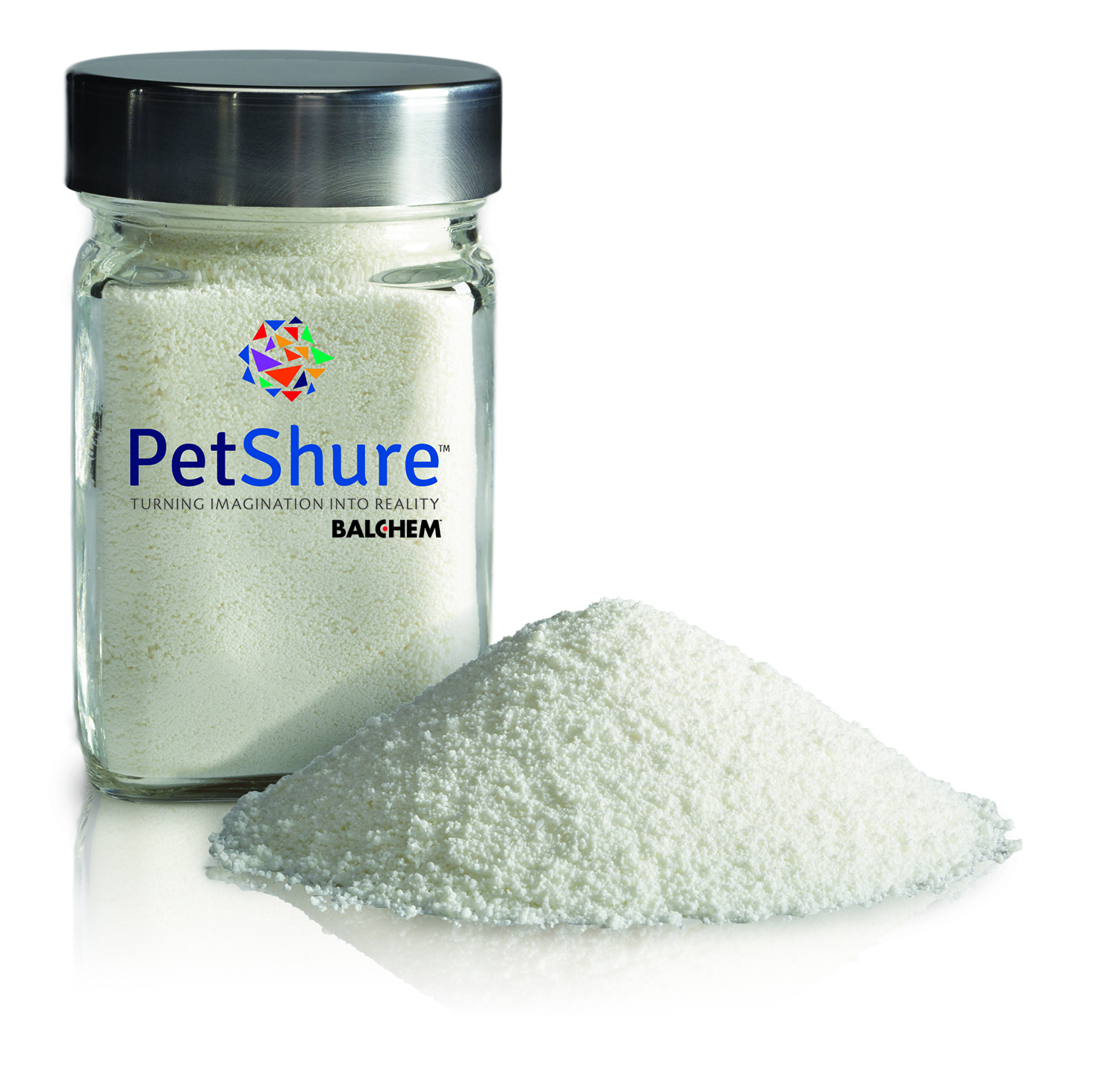Pet food processors have many decisions to make when creating their products. This includes how to prevent microbial growth, control pH and whether to use traditional or natural additives to prevent oxidation and improve shelf life and product stability.
Frank Monteleone, president of FoodSafe Technologies LLC, Deer Park, New York, says it’s not always an objective to control pH in pet food, as pH changes and affects things including texture, color and aroma. “pH is a byproduct of the addition of antimicrobials, and their addition (not the resultant pH) is what is controlled, depending upon the product and application,” he says.
Other factors affecting the resultant application are mineral content, which buffers a pH antimicrobial rendering it less effective, water content, which can dilute it, and ice, Monteleone says. Two product categories used for product stability are antimicrobials, which reduce pathogen load — and to a lesser degree mold depending on the antimicrobial — and antioxidants, which extend shelf life, he says.
Lynn Deffenbaugh, Ph.D., principal technical sales manager for Kemin Nutrisurance, the pet food and rendering technologies division of Kemin Industries, Des Moines, Iowa, says pH control reduces microbial growth and thus, aids in preservation from a microbial/sanitary standpoint. However, pH control is not related to oxidation control.
Managing microbials
“The risk of microbial (yeast, mold, bacteria) growth is lower in dry products versus semi-moist products because microbial growth is strongly dependent on water activity,” Deffenbaugh says. “Dry products generally have a low enough moisture content to reduce the risk of microbial growth unless there are separate packaging or operations issues.”
Most foods are generally near neutral pH or slightly below as-is, Deffenbaugh says, so pH reduction is needed to reach a low enough pH to inhibit microbial growth. Acid ingredients or acid salts directly lower the pH of a product and are used to reach a target pH.
Deffenbaugh says the first step in selecting the type of additive is identifying which one works best for that specific product and correct dosage. “The major issue with using additives is determining the best location to add the additive in order to have good distribution,” she says. “Poor or uneven distribution is a key reason for poor performance. Kemin’s products have been optimized for microbial growth control and palatability.”
“The major issue with using additives is determining the best location to add the additive in order to have good distribution. Poor or uneven distribution is a key reason for poor performance,” says Lynn Deffenbaugh, Ph.D., principal technical sales manager, Kemin Nutrisurance.
Some traditional mold inhibitors such as potassium sorbate and traditional bacterial control ingredients such as propionic acid are synthetic. Alternatively, natural sources of acids offer effective microbial growth control that is consistent with natural product labelling, Deffenbaugh says.
Antimicrobial agents (AMAs) are generally bacteriostatic rather than bactericidal and work by inhibiting the growth of microorganisms, says Hanna Bemer, research and development specialist for KDR/Plato Pet Treats, Fresno, California. AMAs include acids like acetic acid (commonly found in vinegar), benzoic acid and citric acid, as well as non-acids like nitrites and sulfites.
Several factors must be considered when selecting the appropriate AMAs for a food system. “Most importantly, the pKa (an index to express the acidity of weak acids) of the AMA must be higher than the pH of the food for it to be effective,” Bemer says. “This is because AMAs work best in their un-ionized form. The effectiveness of an antimicrobial agent is related to the high-lipid solubility of its un-ionized form, which allows it to accumulate on cell membranes or on structures and surfaces of the bacterial cell, effectively inhibiting its cellular activity.” For example, if the pKa is equivalent to the pH, then only 50% of the AMA is in its effective (un-ionized) form.
Other factors to account for when choosing the best AMAs for pet food products, Bemer says, include presence of other inhibitors (salt, smoke, sugar), moisture content, solubility, length of storage and temperature conditions.
Encapsulated acids
Acids affect metabolism of microbial cells in such a way that eventually leads to cell death. “Weak” acids such as vinegar or citric acid are used because they effectively control microbial growth but are not too harsh to handle and use. “Strong” acids such as phosphoric acid or hydrochloric acid effectively reduce pH but are dangerous for operations staff to handle and may also negatively affect palatability of products, Deffenbaugh says.
Monteleone of FoodSafe Technologies says the primary difference between acids and encapsulated acids is that acids are meant to come into direct contact with the food source prior to ingestion by the targeted animal, and encapsulated acids are controlled-release substances meant to target organisms beyond the stomach of the target animal, in the lower gastrointestinal tract.
“Much science needs to be used when applying encapsulated antimicrobials, because there are many beneficial microbes and flora within the gut of each targeted species,” he says. “So, the delivery of encapsulated antimicrobials must be done with competency towards these good-guy flora.”
Robert Mason, senior food scientist for New Hampton, New York-based Balchem Corp.’s Animal Health and Nutrition Division says encapsulated acids are encapsulated to prevent any pre-reactions with the matrix’s composition, whether that is protein denaturation, purging of moisture, discoloration/off-flavors or dough-forming interference. “Encapsulated acids do not ‘shock’ meat materials like raw acids can,” he says. “Encapsulation allows for a specified control release.”
In the realm of acidulants, acetic acid and lactic acid seem to have additional bacteriostatic properties beyond the general pH reduction found in other organic acids, Mason adds. “The goal of either product is to enable the producer to deliver a finished good that is consistent in quality and safe for our pets,” he says.

Controlling oxidation
When it comes to improving product stability and shelf-life, delaying the onset and the rate of lipid oxidation is key. “The addition of antioxidants is acclaimed as being the most effective, convenient and economical strategy for stabilizing foods,” Bemer says. “Oxidation is known to occur during harvesting, processing and storage of foods. Lipid oxidation can cause nutritional deterioration and produce undesirable flavor, color and toxic compounds that often make food less acceptable to pets.”
Antioxidants work by scavenging free radicals such as lipid peroxy radicals, controlling transition metals, quenching singlet oxygen and inactivating sensitizers. “Hydrogen atoms are donated by antioxidants to free radicals and as a result, convert them to more stable, nonradical products,” Bemer says. “Antioxidant activity depends on a variety of factors, such as temperature, pH, the degree and amount of unsaturated fatty acids, and the presence of oxygen and metal ions.”
Traditional versus natural
For many years, synthetic chemistry using hydroquinone molecules has been the mainstay of stabilizing shelf life and fighting lipid oxidation. “While inexpensive and strongly effective, these synthetic molecules have given way for plant-extracted tocopherols,” Monteleone says. “Virtually every new pet product that is introduced to the market today is stabilized with a tocopherol antioxidant.”
Bemer says vegetable oils possess these natural, monophenolic tocopherol antioxidants. “The consumption of phenolic compounds found in edible oils has been linked to beneficial health properties, such as an anti-inflammatory effect, modulation of intracellular signaling pathways and genic expression, and platelet antiaggregant capacity,” she says.
When evaluating traditional versus natural additives, Monteleone says processors need to use a trial-and-error approach. “Each pet food category has challenges, and it’s important to validate the performance of the pet food and antioxidant over an extended period,” he says. “This will give greater predictability on outcome and shelf life, taking into considerations variations and inconstancies in ingredient quality and fat quality. It’s no longer acceptable to ‘hedge high’ by ‘just adding more’ antioxidant. Now it’s the antioxidant suppliers’ responsibility to work to help the pet food producer.”
Jennifer Igou, general manager for Camlin Fine Sciences (CFS) North America LLC, Urbandale, Iowa, says there are challenges of using traditional antioxidants including chemical sounding names that aren’t consumer friendly. The consumer trend is toward more naturally derived antioxidants. Additionally, some synthetic antioxidants can potentially have negative health effects for pets.
“Animal- and fish-based fats and oils can be effectively stabilized with natural antioxidant systems; however, it is costly and requires more attention to the details,” Jennifer Igou, general manager, Camlin Fine Sciences (CFS) says.
“Animal- and fish-based fats and oils can be effectively stabilized with natural antioxidant systems; however, it is costly and requires more attention to the details,” she says. “Most natural antioxidant systems are built on a backbone of mixed tocopherols carried in a vegetable oil with added natural flavors, chelators and emulsifiers. Proper dilution, effective carriers and uniform dispersion are vital to successful use of these compounds.”
With a significantly higher cost compared to traditional synthetic antioxidants, natural antioxidants can create potential flavor concerns in finished foods and solubility issues. “In general, the use of antioxidants is market driven,” Igou says. “Pet owners will spend more for the health of their pets compared to the animal feed market concentrating on costs.”
Consumer perception continues to be a hurdle for traditional additives. “Continuous consumer education is critical to help them fully understand the safety of these technologies,” Mason says.
Products on the market
When Balchem’s PetShure Lactic Acid, Citric Acid and GDL is added to the matrix and thermally processed, the encapsulated acid is released, thereby, reducing the pH of the matrix. “This pH reduction is a hurdle to microbial growth,” Mason says.
Kemin markets PrevION VC Dry which contains natural sources of citric acid and buffered vinegar, both acidifiers, says Deffenbaugh. Kemin’s Allinsur M-TC Dry is formulated to control microbial growth and oxidation in wet meat slurries. “This product is especially effective for mold control in semi-moist treats,” Deffenbaugh says.

Monteleone says FoodSafe’s SafeNature line uses tocopherol antioxidants and includes US-produced, soy-free, sunflower and GMO-free varieties for enhanced label claims. FoodSafe’s Meat DefendR wash is an antimicrobial wash intended to significantly reduce pathogen loads, including the number of colony forming units (CFUs) on the surface of whole muscle cuts, he says.
CFS offers traditional and natural shelf-life solutions. “Either separately or in combination, BHA, BHT and propyl gallate are effective in low concentrations to stabilize oils and fats, animal protein meals and finished products that are highly susceptible to oxidation,” Igou says. CFS’s Xtendra traditional shelf-life solutions utilize ingredients that have been long proven to protect the oxidative stability of pet food products from the raw material stage through to the finished product.
Igou adds, “NaSure plant-based shelf life solutions are the natural option when an extended shelf life is needed. Rosemary extracts, green tea extracts and mixed tocopherols are just some of the natural ingredients used in antioxidant formulas that are high in antioxidant activity and very effective.”
Selecting traditional or natural antioxidants is a complex decision for processors. Each formulation requires a balance of ingredients to provide reliable product safety and stability and, at the same time, meet the label requirements consumers prefer.



